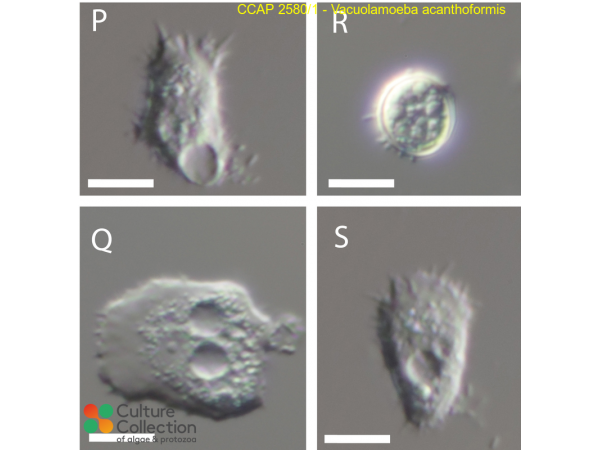Note: for strains where we have DNA barcodes we can be reasonably confident of identity, however for those not yet sequenced we rely on morphology
and the original identification, usually made by the depositor. Although CCAP makes every effort to ensure the correct taxonomic identity of strains, we cannot guarantee
that a strain is correctly identified at the species, genus or class levels. On this basis users are responsible for confirming the identity of the strain(s) they receive
from us on arrival before starting experiments.
For strain taxonomy we generally use AlgaeBase for algae and
Adl et al. (2019) for protists.
| Attributes | |
| Authority | Tice, Geisen & Brown 2016 |
| Isolator | Geisen (2014) |
| Collection Site | meadow, altitude >4,100m Mila Mountain, Maizhokunggar County, Lhasa, Tibet |
| Climatic Zone | Mountain |
| Notes | Isolation: single cell; cystformer; mean cell length 22.5 µm, irregular shaped amoebae, acanthopodial extensions can form from all areas of the cell body. Cells most often with 1 vesicular nucleus with a central nucleolus. Cells with 2 nuclei have been observed, cell body often has 4-5 vacuoles, sometimes with one or more contractile vacuoles, cysts round to irregularly shaped with a single wall; image key - P,Q&S) trophic cell R) cyst |
| Axenicity Status | Bacteria present |
| Area | Asia |
| Country | Tibet |
| Environment | Soil |
| GMO | No |
| Group | Protozoa |
| Latitude | 29.7 N |
| Longitude | 92.166667 E |
| In Scope of Nagoya Protocol | No |
| ABS Note | Collected pre Nagoya Protocol. No known Nagoya Protocol restrictions for this strain. |
| Collection Date | pre June 2014 |
| Original Designation | Tib 84 |
| Pathogen | Not pathogenic: Hazard Class 1 |
| Strain Maintenance Sheet | SM_Vacuolamoebaacanthoformis.pdf |
| Toxin Producer | Not Toxic / No Data |
| Type Culture | Yes |
| Taxonomy WoRMS ID | |
CCAP 2580/1
Vacuolamoeba acanthoformis
- Product Code: CCAP 2580/1
- Availability: See Availability/Lead Times

